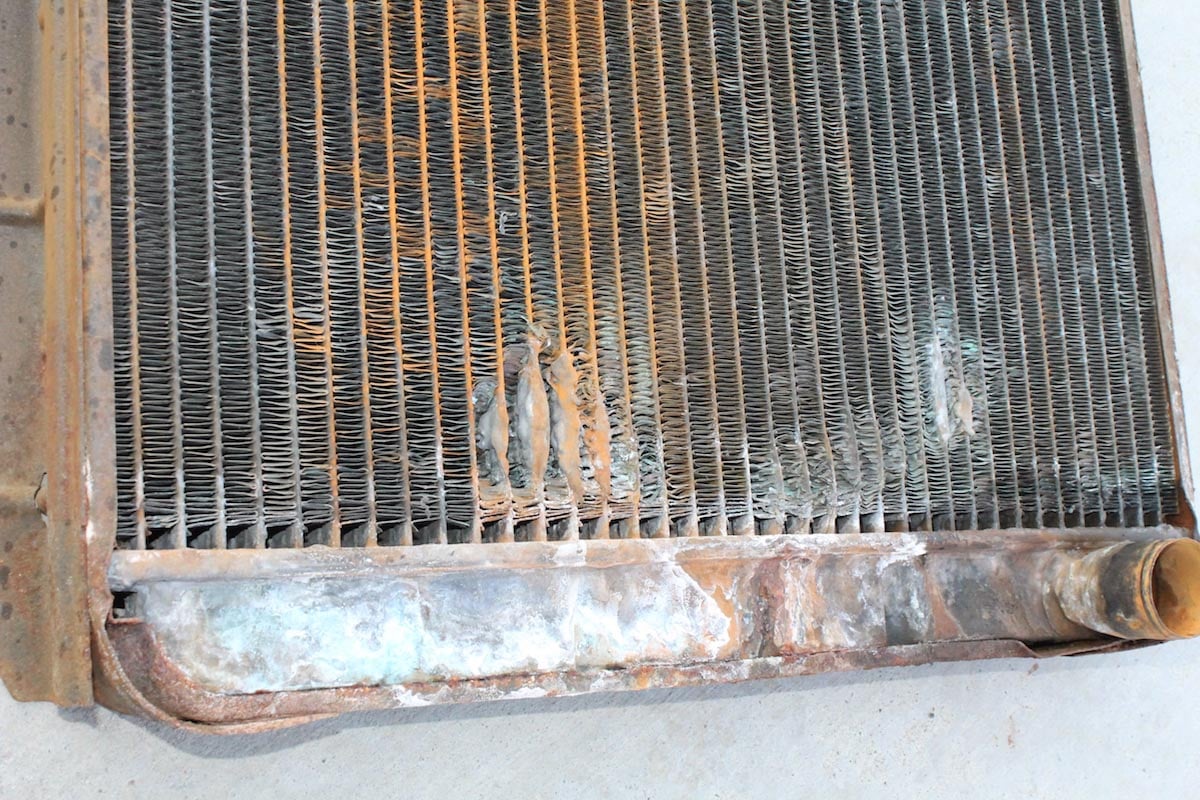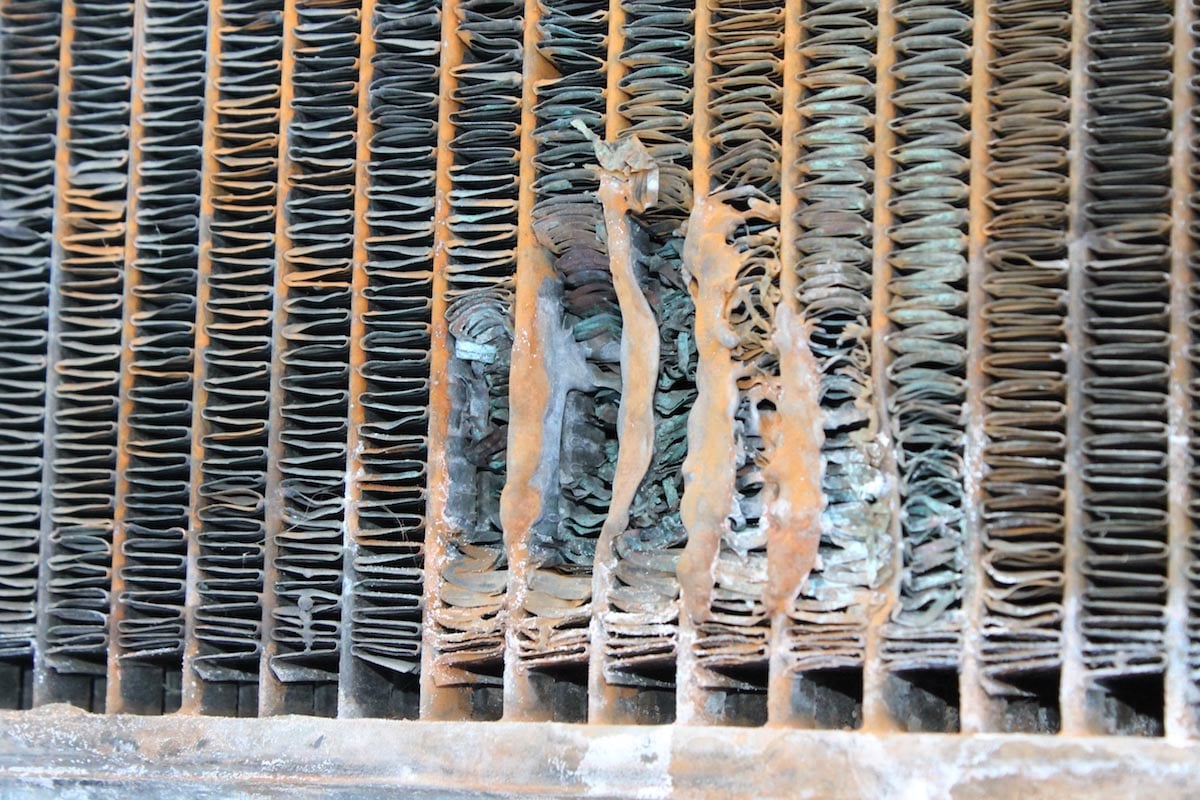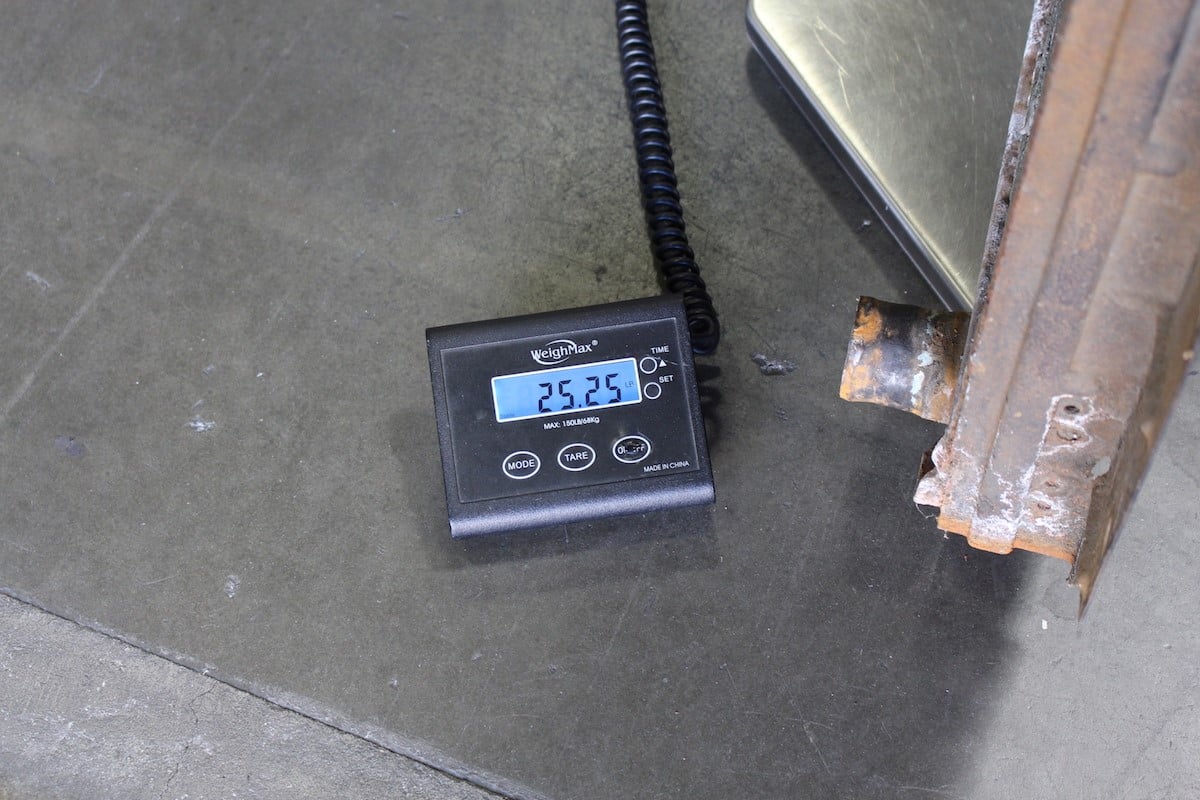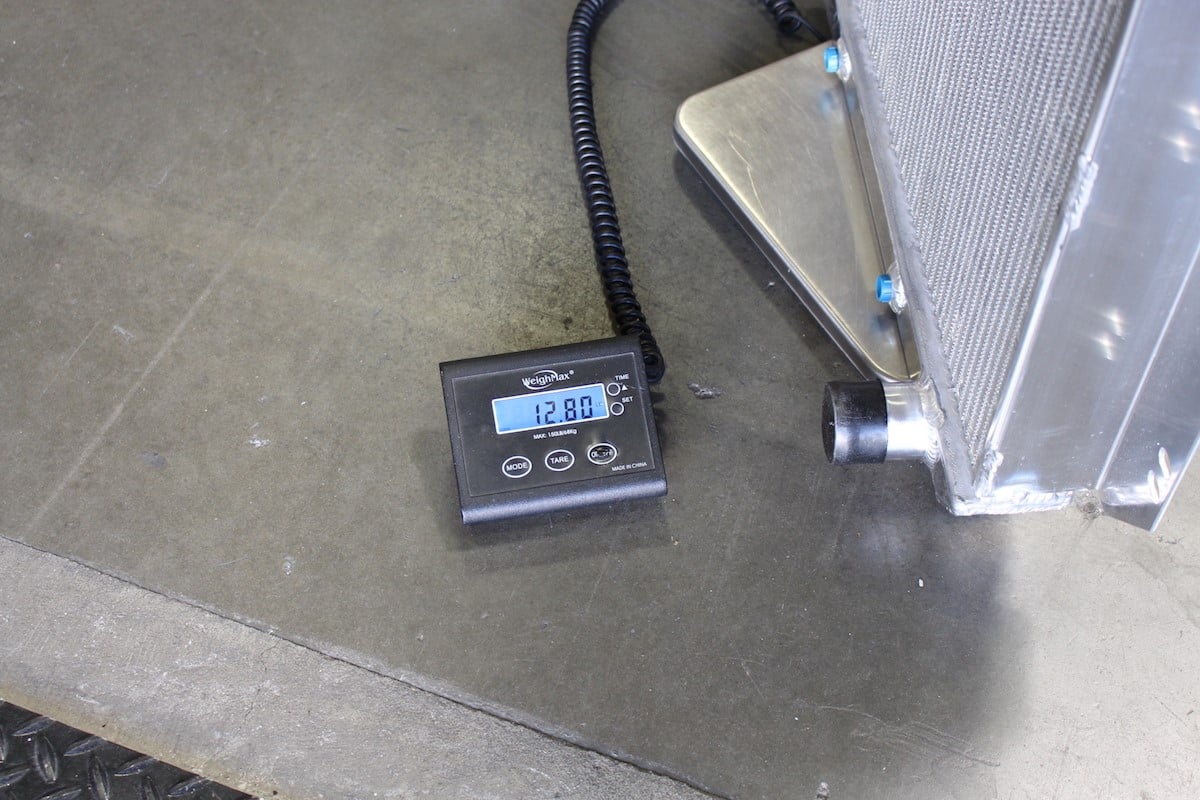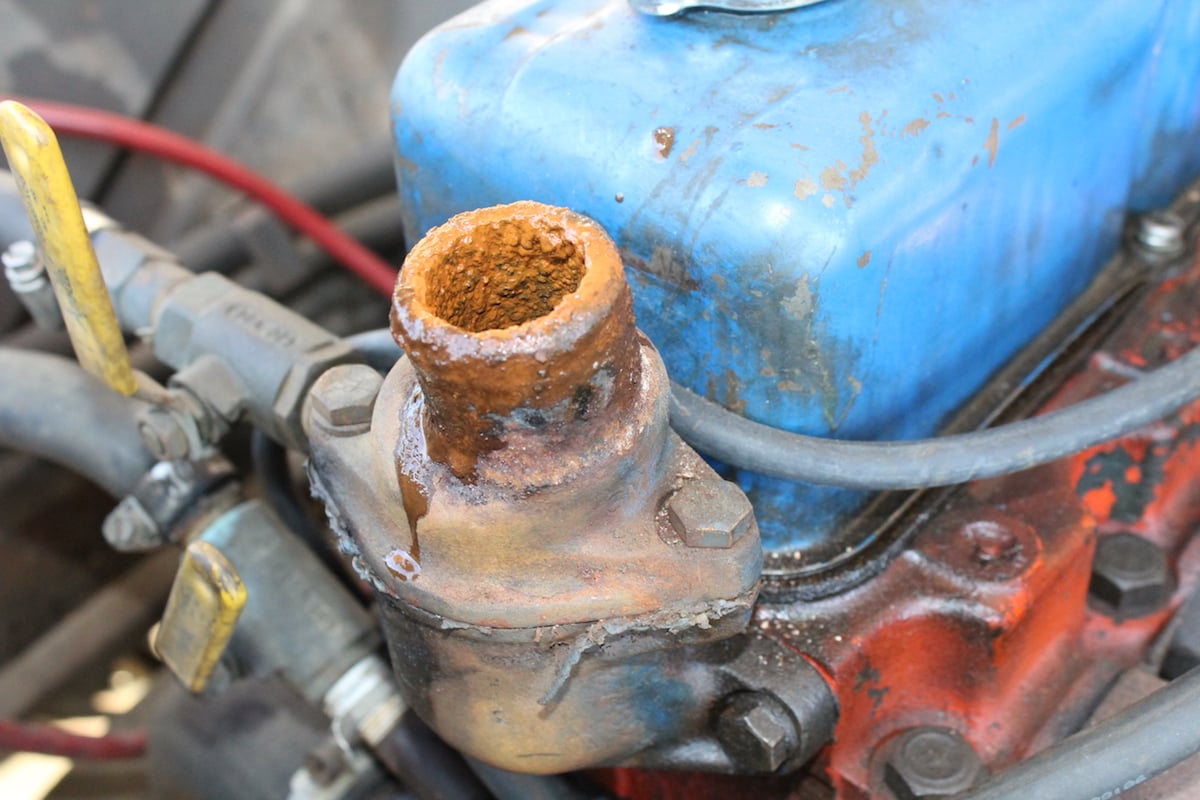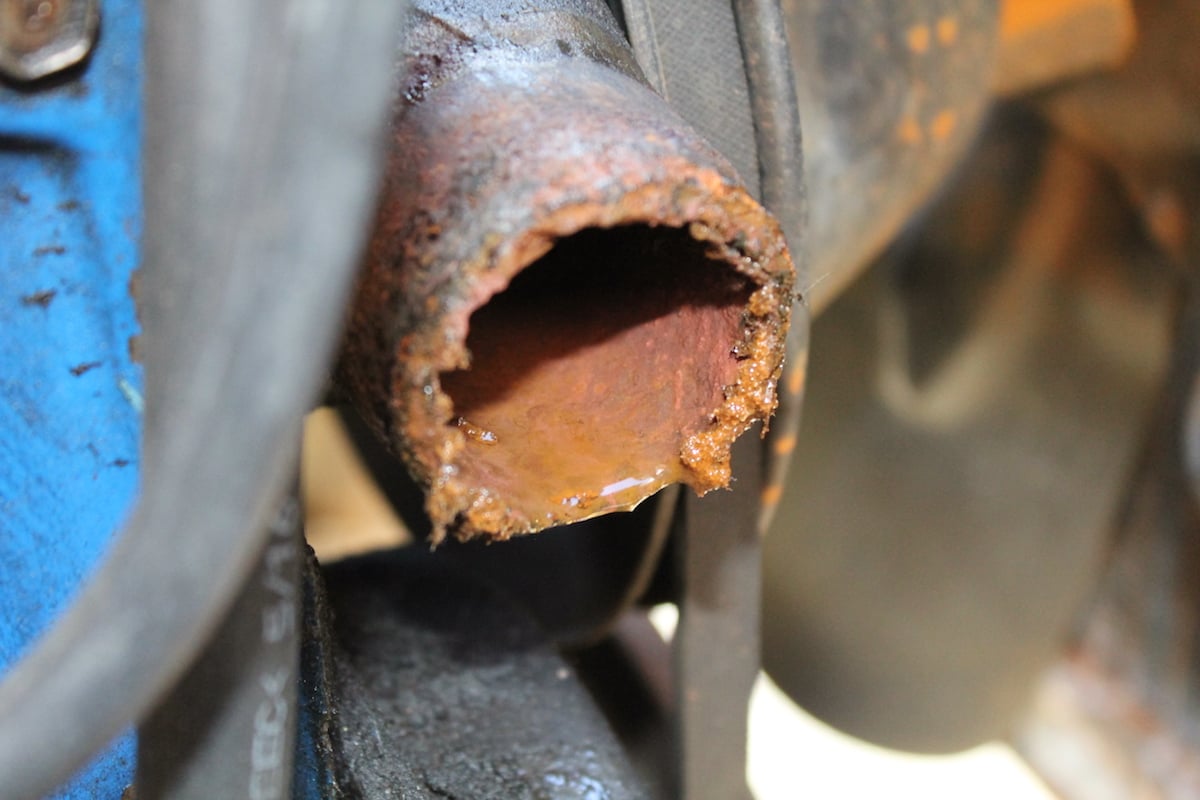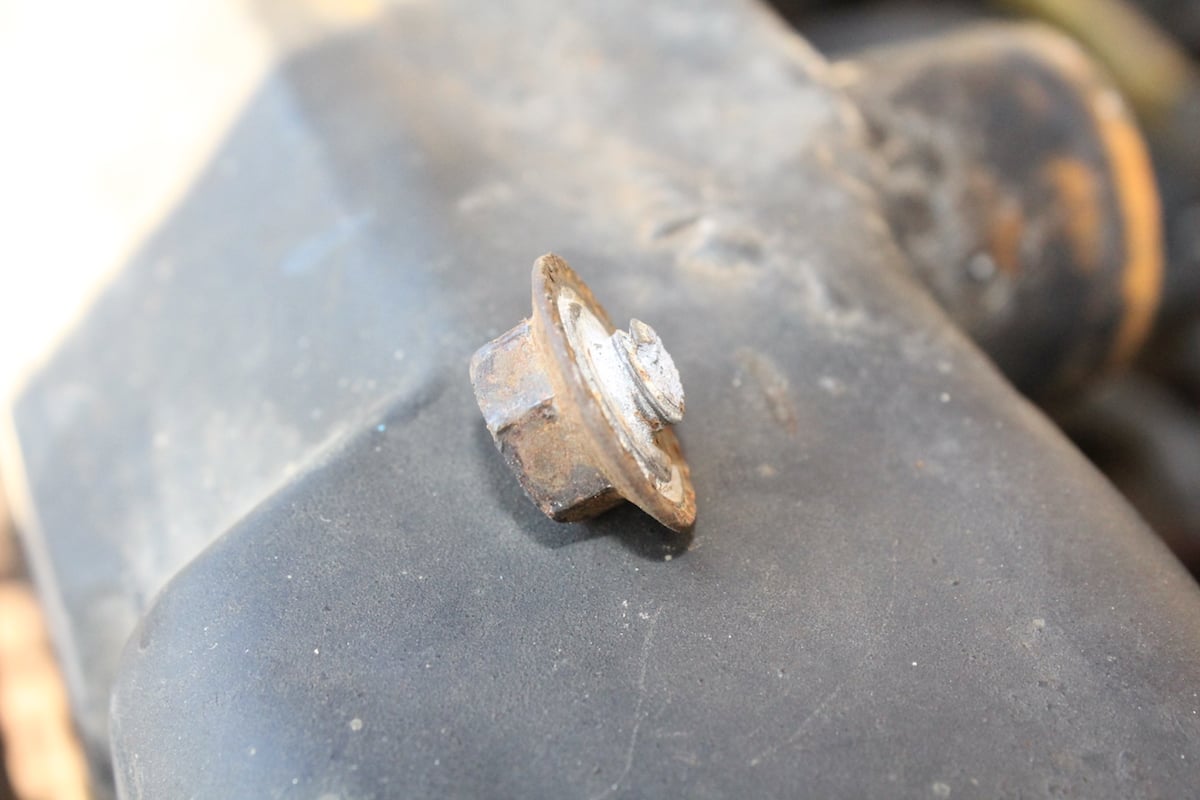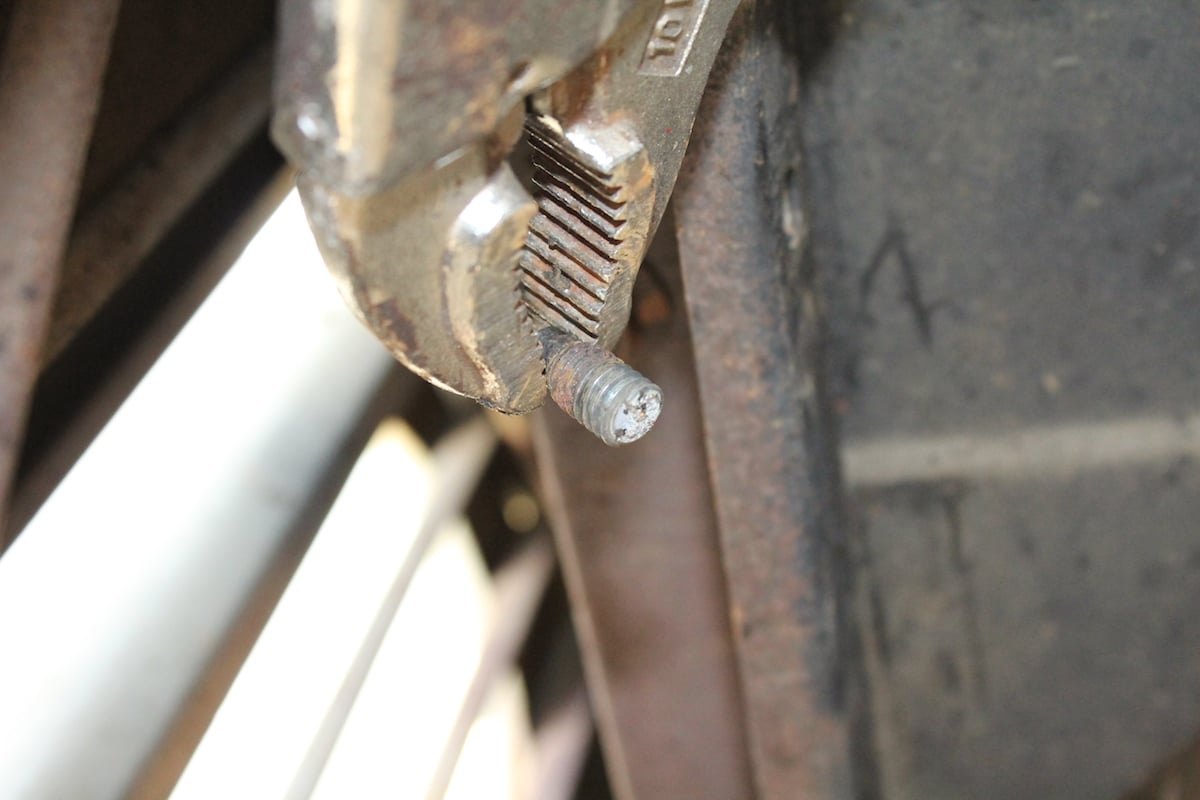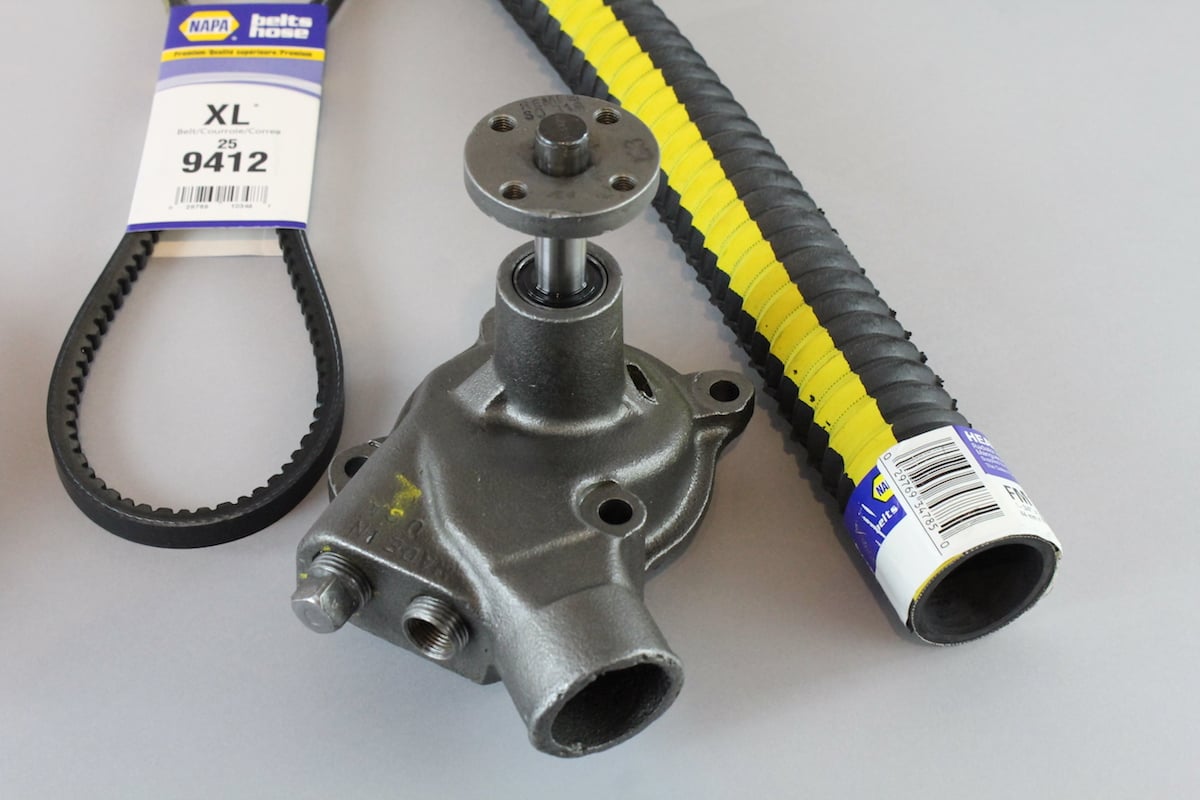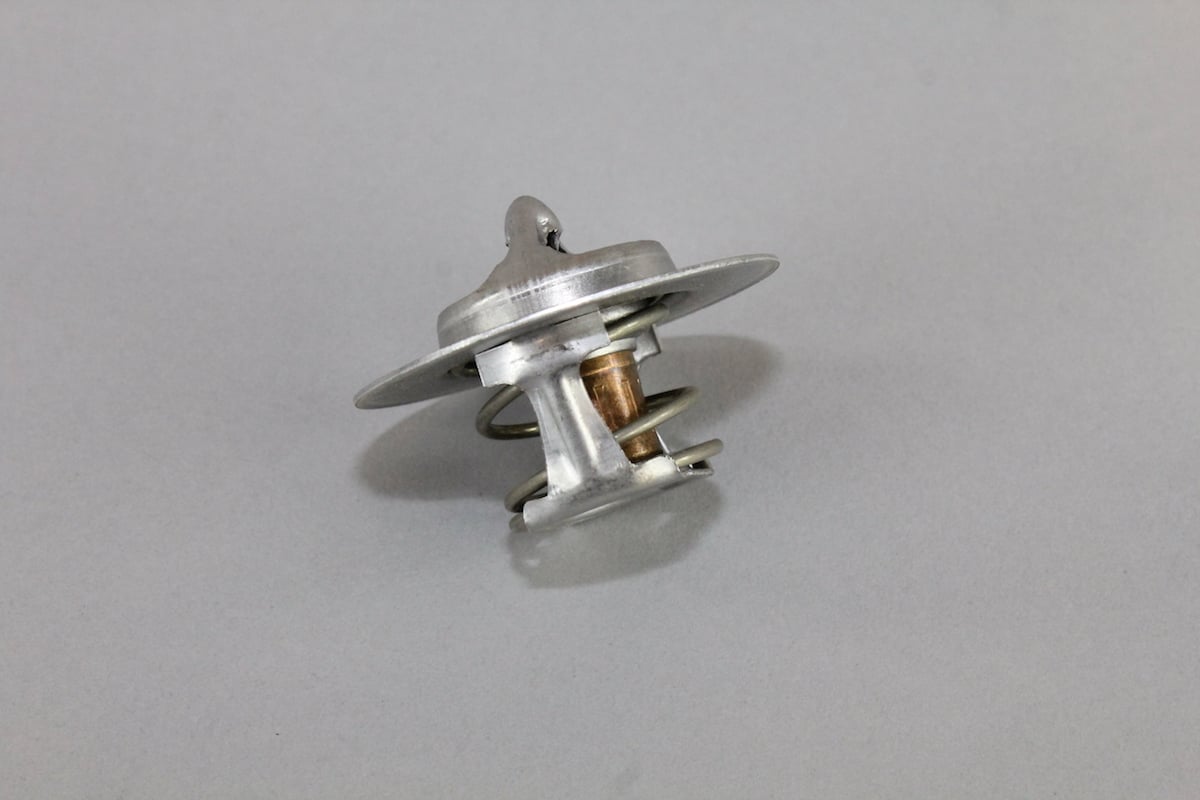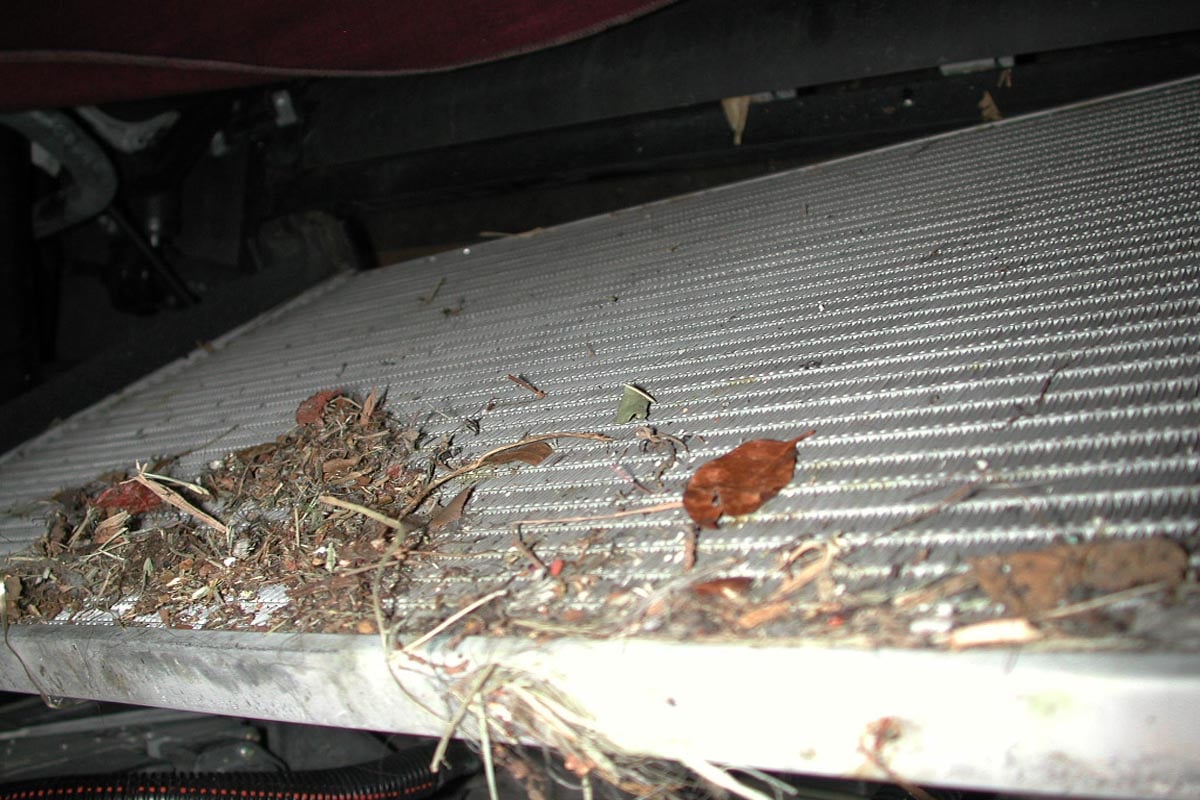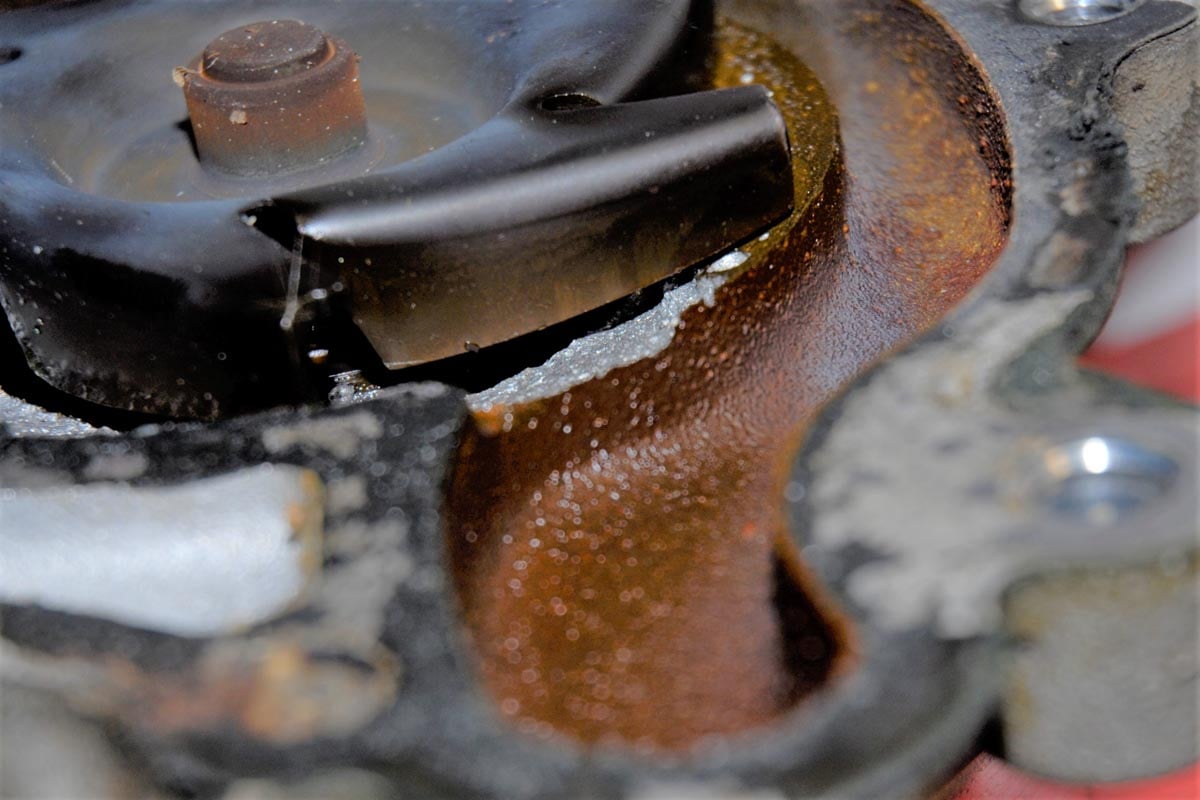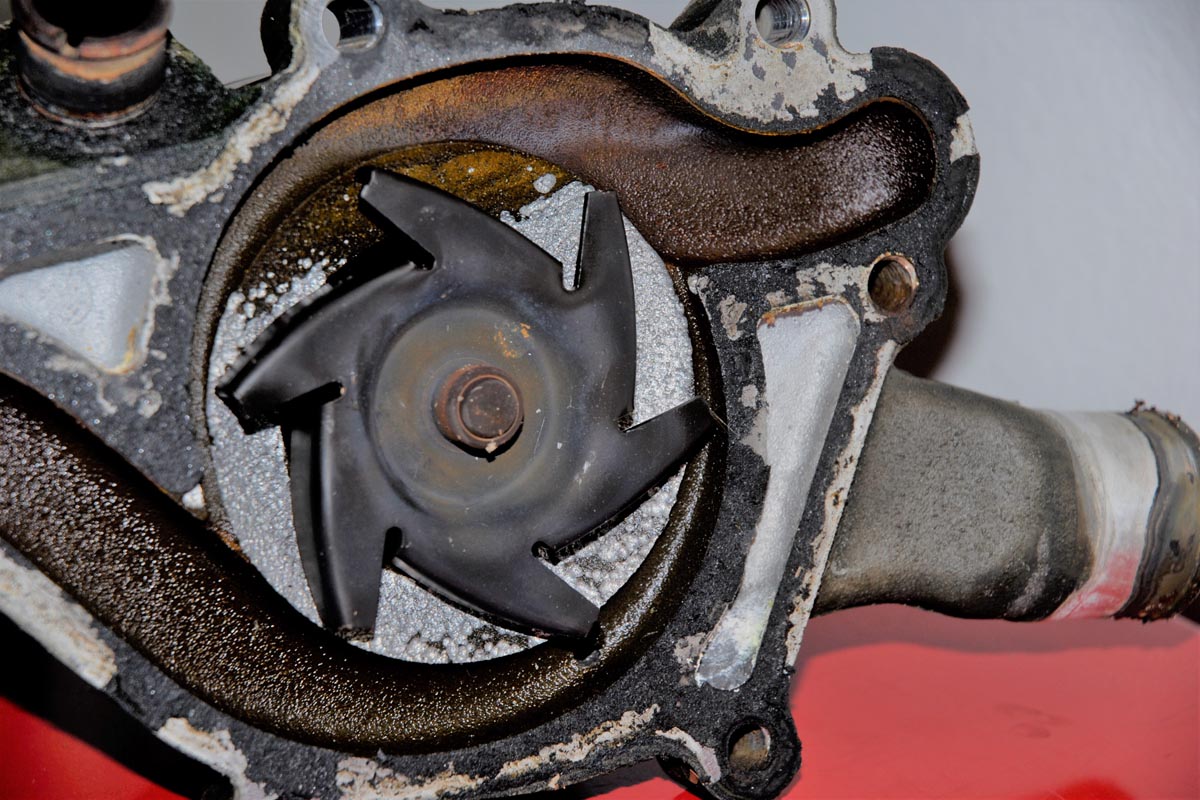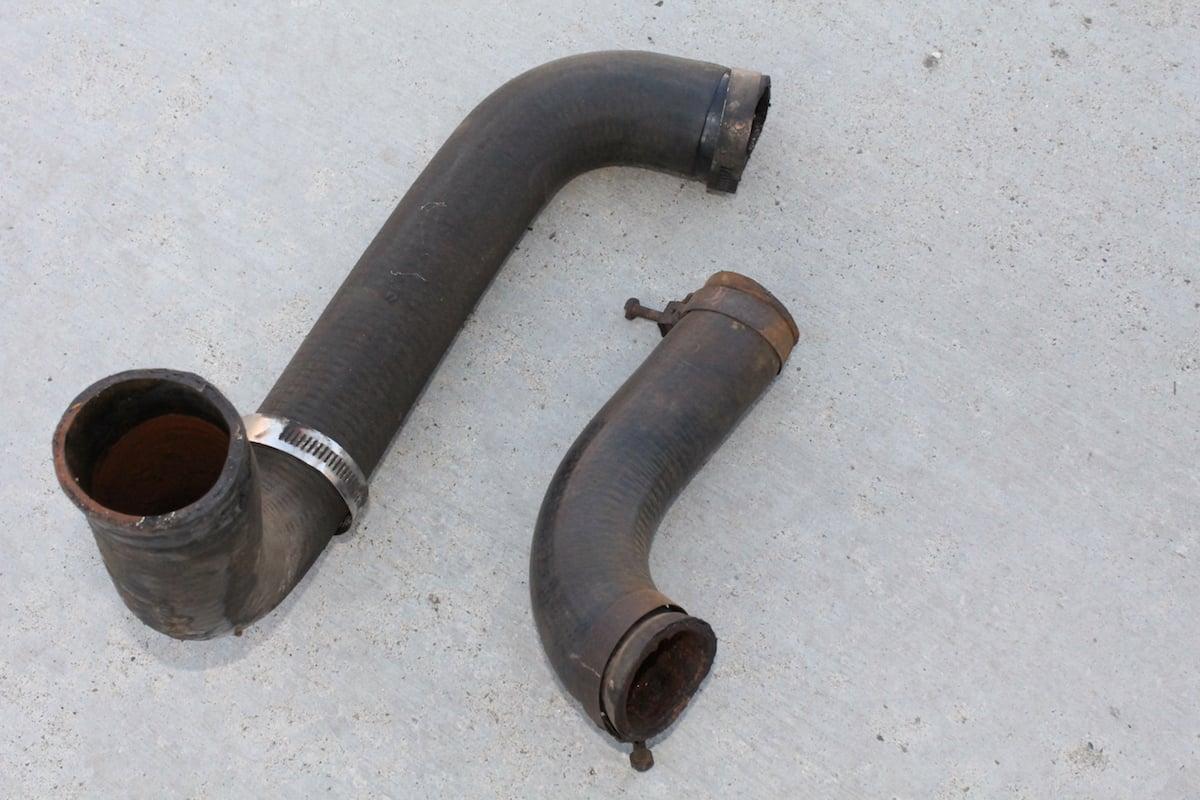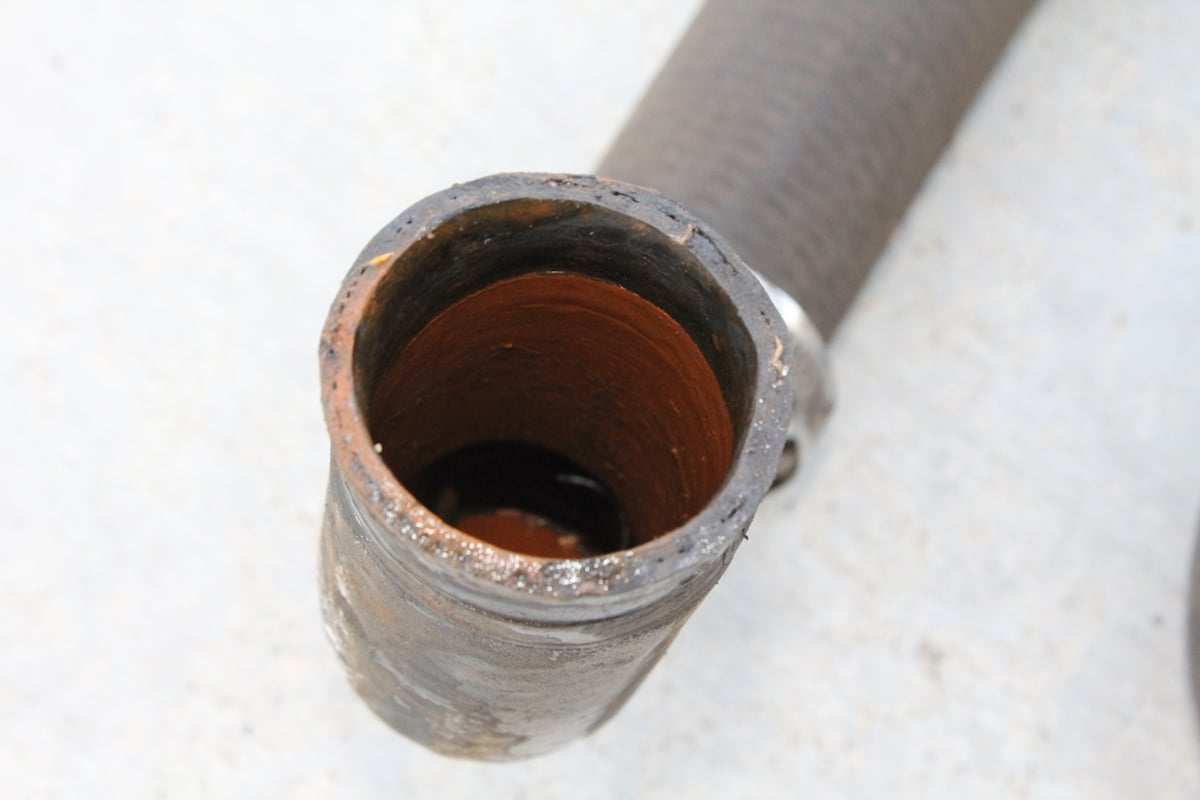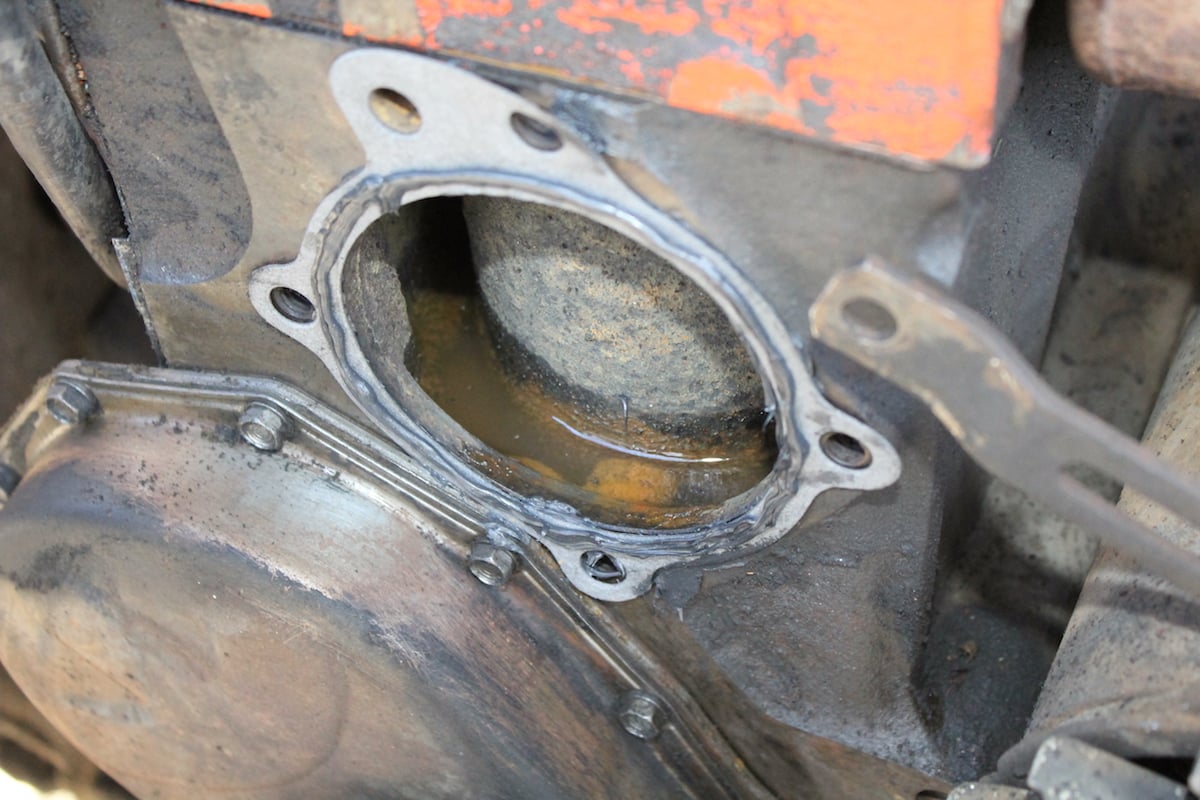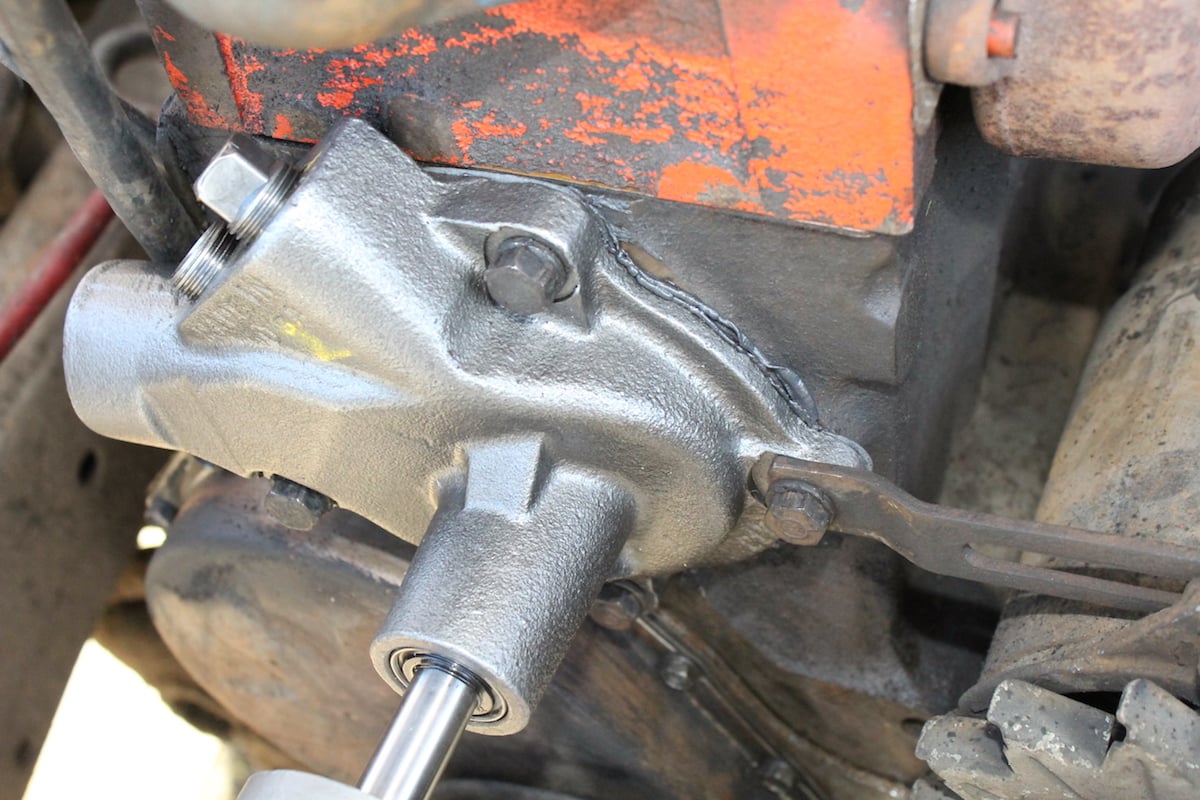One thing that all engines have in common is heat. They need it to operate properly, but when they can’t control it, things can go bad – quickly. There are many reasons why a particular car’s engine overheats, and it bears noting exactly when the overheating occurs. We reached out to our friends at Champion Cooling Systems [2] to help us control the temp on our budget project truck [3].
The old radiator was tired, and likely, more tubes were plugged than open. It looked like the fan had kissed the core a few times over the decades.
The New Radiator
Ordering from Champion Cooling Systems’ website is a cinch, and finding the correct radiator to fit your application is almost seamless. Simply input the vehicle type and engine data, and the appropriate component pops up on the screen. Put it in your basket, complete the order by paying for it, and the unit will be at your doorstep in a couple of days.
We ordered the all-aluminum radiator for 1960-1962 Chevrolet [6] trucks, part number 6062. This is Champion Cooling Systems’ economy-core radiator that features two rows of 3/4-inch tubes. According to the company’s published information, this radiator has the cooling capacity to support larger V8 engines, which is way overkill for our old mule. But with a price tag under two bills, it is a bargain.
A big benefit to the new Champion aluminum radiator was the almost 12.5-lb weight loss.
Champion radiators are built with 100-percent welded seams, use no epoxy, and in an ISO-certified facility. We were pretty confident with the company’s standards and workmanship, and feel this is a perfect fit for our budget build. This radiator will probably outlive the engine, and probably work well with any future engine upgrades, which makes it a win/win.
Specifications
- Part number: 6062
- Core dimensions: Height 19-7/8 inches x width 21-5/8 inches
- Overall dimensions: Height 24 inches x width 26-3/8 inches
- Core configuration: Two row
- Radiator flow: Down flow
- Hose locations: Center inlet, passenger-side outlet
- Hose fittings: 1-1/2-inch inlet, 1-3/4-inch outlet
- Mounting: Bracket-type
Troubleshooting Overheating Problems
If your car overheats when idling in traffic, chances are good that there’s a flow issue, either water or air. If the light turns green and your car starts to cool down before the next red light, a lack of air flow at slow speed is likely your problem.
When we opened up the system, rust was everywhere, a sign that water was likely the only coolant used for quite a while.
If your car overheats on the highway but does okay driving around town, check that the coolant is flowing like it should. Start by making sure there is enough fluid, and that it is flowing through the radiator and engine at higher rpm. If not, the radiator tubes could be plugged and hindering flow, or, perhaps the lower coolant hose is collapsing at high rpm. Ever wonder why that spring is inside the lower radiator hose? It’s there to keep it from collapsing as the water pump tries to suck coolant back into the engine.
Planning ahead and applying a penetrating oil on all the bolts a couple of times before you try loosening them may help with their removal. We had one bolt snap. We needed to remove the rest of the broken bolt before we could reuse the bolt hole.
That brings us to possible issues on the engine side that cause overheating. There are a few things that will contribute to excessive heat within the engine itself. The whipping boy of all overheating issues is of course, the thermostat. Sure, they go bad, but that’s not always the case. And, don’t think that swapping in a lower-rated one or removing the thermostat altogether will cure all engine temp woes either. There’s a reason that manufacturers spent millions of dollars a year producing cars with thermostats. If removing them was an improvement, the OEMs would surely have enjoyed the cost savings.
A quick glimpse at our 1960 Chevy C20’s radiator and it isn’t hard to imagine that it probably left the factory with that unit. It had a couple of smears with the cooling fan, and the river of rust that flowed through it hinted that what tubes weren’t disrupted, were most certainly not cooling efficiently. It was time to remove some sweat from Geronimo’s brow.
 [14]
[14]Be sure to make note of any supports or spacers for the pulleys or specific bolt lengths when you remove the water pump. You’ll need that info when you re-assemble the new unit.
Since the fluid (if you want to call it that) was gone, it made for the perfect time to replace the water pump, hoses, and thermostat – if it had one. Removing the water pump on a Stovebolt Chevy six isn’t difficult by any means, so we’ll save you the blow-by-blow. But there are a few things worth noting.
Hand-Made Right Here
One of the benefits to having the radiator hand-built, is they can be tailored to each application. Champion can place the inlet and outlet wherever your application dictates. Cores range from 2-, 3-, or 4-rows, and they can also install a transmission cooler if your ride has an automatic transmission.
Their website lists many applications and options that are available, but you can also contact them directly if you don’t see what you need.
When we opened up the closed system that tried to keep Geronimo cool, we found that there were two things this cooling system lacked, a thermostat and coolant!
Most likely, the system had either leaked enough to make the cost of replacing the proper coolant unnecessary, or someone mis-understood that water is a great coolant, but a terrible rust inhibitor. A fact that was staring us in the face behind every bolt and hose clamp. We would need to address the rust buildup if we wanted to do this right.
We started the operation by flushing the system with water until the Mississippi was backed up somewhere between Tennessee and Arkansas. Once clear water was restored, we then treated the system to Justice Brothers’ Radiator Cleaner [16] to help remove the rust from the engine. Only then, could parts begin making their way back under Geronimo’s hood.
We started with the water pump. Giving the gasket a touch of our preferred RTV sealant, we then installed all four of the bolts that hold the water pump to the block, making sure that any brackets were included.
We purchased a new thermostat since previously, there wasn’t one. A few things about thermostats that bears repeating. The rated temperature of a thermostat is only the low side temperature it controls, it will NOT keep your engine from overheating or limit the upper temperature of the engine. Once it opens, it has done everything that it was designed to do. If the engine overheats with a good working 195-degree thermostat, it will still overheat with a good-working 165-degree thermostat.
 [18]
[18]You will also want to check that the sending unit and gauge are working properly, and the temp on the gauge matches the actual coolant temperature. An IR heat gun is great for comparing temperatures.
Again, two bolts and a gasket situated our new thermostat, and since there was enough room, we installed the cooling fan and pulley. Some vehicles might need the radiator, fan, or a fan shroud installed in a specific order, which will be opposite of the removal process.
We replaced the water pump, hoses and belt, along with installing a new thermostat.
After getting rid of all that rust from inside the engine, it would be a shame to once again introduce it by reusing the old hoses. We’ve seen hoses so coated with scale that they would crack and snap as you squeezed them in your hand. The cost of hoses is cheap, but the cost associated with a burst hose on the road can be quite expensive.
You must have adequate air and water flow to keep an engine cool. Some designs allow debris build-up in the radiator, and just because the water pump doesn't leak or squeak, it may still be faulty. Check out the cavitation damage to this aluminum water pump. Flow was greatly reduced due to the increased clearance to the impellers.
It also is worth noting that the lower hose needs to be reinforced so that the water pump doesn’t suck it closed at highway speeds. Some hoses have the aforementioned spring in them, while some are reinforced within the hose material itself.
If the hoses have any age on them whatsoever, now is the time to replace them. Notice all the rust inside the hose. It won't stay there once the fluid starts flowing again.
We recommend only using traditional green coolant. – Matt Dawson, Champion Cooling Systems
Whatever your chosen concoction, you need to be sure that it possesses enough corrosion resistance to prevent all that scale from reappearing. The simplicity of the Stovebolt six means that a good 50/50 mix of good ol’ glycol will keep it cool without any worry of freezing or rusting, and the folks at Champion have no issues recommending this tried and true coolant for their customers. “We recommend only using traditional green coolant,” said Matt Dawson.
After we flushed the block, new gaskets, water pump, and thermostat were installed.
We buttoned everything up, and after a quick check for leaks, we headed out on the open highway. We’re happy to report that Geronimo now keeps his cool, and his coolant is rust free and intact. The temp gauge is now a useful tool, not a taunting tyrant. And with the increased reliability, we’re getting thirsty for other upgrades to make Geronimo more fun to drive.
The End Result
We quickly found out how well the Champion Cooling Systems’ radiator worked when we upgraded to an EFI system [30] to feed the beast. Remember our 160-degree thermostat? It worked exactly as advertised, and the Champion Radiator supplied plenty of chilled coolant upon demand to the engine. The only problem that popped up was when we added the self-learning EFI system that would begin to correct at 170 degrees.
You guessed it. Our truck never got hot enough for the EFI system to self-correct properly. We found ourselves back at the parts store ordering a 195-degree thermostat. We are happy to report that the cooling system and EFI system both work extremely well after replacing the thermostat, even in the stupidly-hot SoCal Inland Empire summer weather.
For more information on Champion Cooling Systems, visit them online at www.championcooling.com [2]

